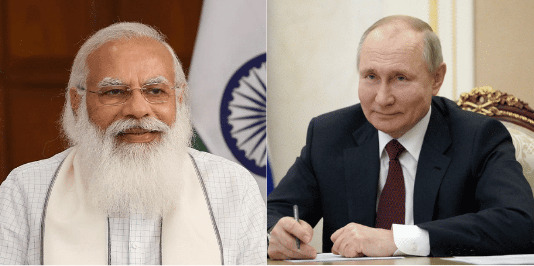After Independence, if there is one country India could bank on, it is Russia. Right from the day when Russia was a leader of the communist bloc, Indian political, economic, defence, and cultural space has been largely influenced by Russia. The five-year planning, a big part of Independent India’s economic policy was inspired by Russian policies. Russia was the one who brokered India-Pakistan peace after the 1965 war. In the 1971 war, the credit for India’s huge victory largely goes to Russia, as it offered unlimited support to India when Richard Nixon led bloc had deserted Indian interests and were supporting Pakistan’s Genocides in modern-day Bangladesh.
After the dissolution of the USSR in 1991, the newly formed Russian Federation has maintained its close political, economic, strategic, and defence relationship with India. When Prime Minister Shri Atal Bihari Vajpayee led the government conducted Nuclear Test, Russia was one of the few countries that supported India. Later, Putin-led Russia made sure that India-Russia relations never went haywire during Congress rule. After, Modi Government came to the fore in 2014; India and Russia are touching new highs in terms of their bilateral arrangements.
The biggest gap between India-Russia relationships has been the trade. Despite India being the closest partner of Russia, the Indo-Russia trade could never reach its full potential. While India’s trade with the USA is about to touch $100 billion, India’s trade with Russia has been targeted to be around $30 billion by 2025. Defence cooperation has been the biggest contributor in nurturing Indo-Russia trade relations. During 2012-16, Russia accounted for 68 per cent of Indian arms imports. After the Make-in-India policy came to the fore, the defence collaboration between India and Russia has taken a hit. S-400 worth $5.43 billion was the last big defence deal between India and Russia.
But with Russia being an all-weather friend, India and Russia have to keep supporting each other to balance out US and China hegemony in Geopolitics.
Hydro Carbons
According to the world energy outlook report by the International Energy Agency, India will constitute 30 per cent of the increase in energy demands and will consume about 11 per cent of world energy by 2030. Russian company Gazprom has fulfilled India’s energy demand of 1.7 MMT of LNG from 2009-16. An Indian oil consortium combined of IOL, IOCL, and BPRL signed definitive agreements to acquire participatory shares representing 29.9% of the charter capital of LLC “TYNGD”, a company organized under the law of the Russian Federation, from LLC RN Upstream, a wholly-owned subsidiary of Rosneft Oil Company, the National Oil Company (NOC) of Russia.
Nuclear Energy
The most visible area of India-Russia cooperation in recent years, except for the defence industry, has been nuclear energy. Russian aid to India’s civil nuclear energy program dates back to 1988. The construction of the Kudankulam Nuclear Power Plant (KKNPP) in Tamil Nadu began in 2002, despite being under considerable pressure from the Nuclear Suppliers Group and the dissolution of the USSR. Russia has also agreed to provide six more ‘Generation 3-plus’ 1200 MW units for the second site, which will produce more energy and operate for a longer period.
Renewable Energy
Cooperation in the field of renewable energy is expected to be a little more pronounced and more extensive. Both countries are taking steps towards green energy, although Russia’s need for renewable energy is not as big as that of India. India’s ambitious green energy goals and its growing market for renewable technology provide an opportunity for Russian companies to invest. Rosatom is eyeing India’s wind energy markets through its OTEK division. They also share a common goal of providing electricity to remote areas. Therefore Rosatom, through its Hungarian subsidiary Ganz EEM, is ready to supply India’s needs for small hydro-power plants.
International North-South Transport Corridor and the Eastern Maritime
Chennai-Vladivostok Maritime corridor will increase India and Russia’s trade by a substantial margin as, it will include the business through Visakhapatnam, Kolkata, Vostochny, and Olga. India’s growing interests in the Russian Far East are about to bring substantive change in the strategic chessboard of Eurasia. As India-Russia set to take leaps and bounds in the bilateral relationship, China’s dominance in the region is about to get destroyed.
